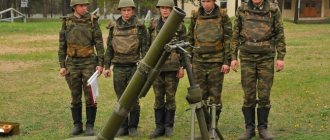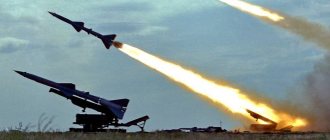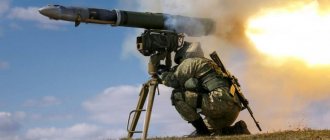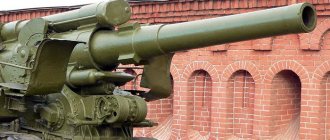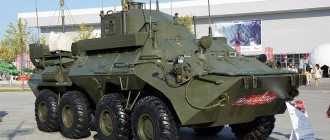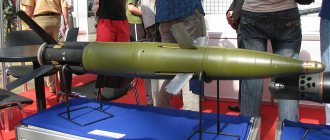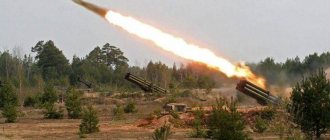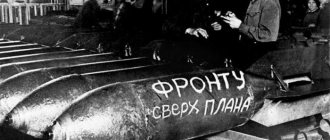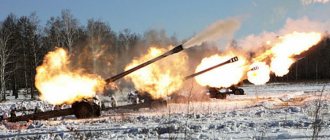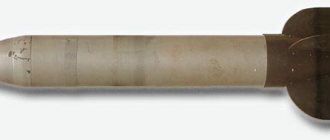Current developments in the defense industry
Initiated and planned efforts to modernize mortar systems in the armed forces, as expected, led to technological developments in European industry. The development companies presented some of them in September at the international arms exhibition DSEI 2022 in London.
EXPAL Company
Spanish manufacturer of mortar systems "Expal" ( EXPAL
) demonstrated eCompaX, an electronic device for targeting mortar systems of any caliber deployed outside of vehicles.
As a replacement for classic compasses, eCompaX simplifies and speeds up the deployment and targeting of field (removed from transport platforms) mortars. For this purpose, the system has several GPS-independent sensors (including a video camera), an inertial measurement unit ( IMU)
) and a magnetic compass complete with Northern Hemisphere grids (magnetic, geographic and coordinate). Taken together, the equipment provides vertical and horizontal guidance of the mortar within 30 seconds.
The eCompaX electronic sight weighs about 1.2 kg
The operation and functioning of the system is said to be very simple. After occupying a firing position, the eCompaX with the camera deploys a few meters ahead of the mortar system, in the rough direction of fire. Integrated north direction finder for approximately 10 seconds. records the north magnetic direction with an accuracy of seven thousandths.
The camera then takes a series of images to optically record the north magnetic azimuth. The eCompaX is then mounted on the mortar, and digital images are used to estimate the direction and determine the positioning of the weapon system. Using image-based tuning, the algorithm calculates the weapon's directional orientation. Position sensors determine the height of the seat.
In addition, the company introduced M-Counter, an electronic shot counter for a mortar. It operates independently of power sources and is designed to automatically collect data, freeing mortar crews from paperwork and simplifying repair planning.
Hirtenberger Company
At the DSEI 2022 exhibition it presented the 120 mm “super-fast, ultra-modern” mortar system MKII ( 120-mm-Super-Rapid-Advanced-Mortar-System MKII, SRAMS MKII
). Back in 2022, Hirtenberger announced at Eurosatory a collaboration with ST Engineering to sell an automatic mortar of the SRAMS family in Europe. The first demonstration firing of the new system in front of a European professional audience is planned for mid-November 2022 in Slovakia.
The original SRAMS 120mm mortar (left) and the new SRAMS Mk II (right)
The original 120 mm SRAMS mortar is equipped with hydraulic adjustment of guidance in height and direction. The new model, SRAMS Mk II, is equipped with a fully electric guidance system, and the directional guidance is increased by 180 degrees in both directions.
Regarding incoming orders, it is reported that, along with a contract for the modernization of stale 120 mm ammunition of the Bundeswehr, Hirtenberger in the first half of 2022 received an order for the supply of insensitive 60 mm mortar ammunition for the Dutch Armed Forces. The framework agreement was signed for five years with the possibility of extension for another two years.
Junghans Microtec Company
The new type of mechanical mortar fuses produced by the company DM111S (impact fuse with and without delay) and DM183 (impact and time detonator) are in steady demand among various armies of the world.
Fuzes DM111S (left) and DM183 (right).
The DM111S product has received final optimization for specific customer requirements. As a result, its overall functional reliability is further enhanced. Both detonators comply with the latest safety requirements according to the STANAG 4187 standard. The standard, in addition to the presence of an acceleration fuse as a second mechanical safety element, requires the installation of a safety wind wheel (ring).
The latter replaces the well-known safety locking pin from the predecessor models DM111 and DM93 and allows you to protect military personnel in case of mistaken handling of mines (the safety pin is removed too early or not removed at all). Other advantages of the new detonators are that they are suitable for automatically loaded mortars.
General certification of products and their introduction to the market is scheduled to be completed in mid-2022.
Mortar troops
Mortar troops
Although operationally mortars were a less important form of artillery due to their limited range, the Red Army increased the number of mortars on the battlefield throughout the war.
First of all, they were intended to provide close-in fire support for rifle troops on the defensive or during operations to break through enemy defenses. In addition to the mortar units of rifle units and formations, by the beginning of the war the RGK had eight mortar battalions, two of which were under the operational control of active fronts, and the remaining six in military districts or inactive fronts. These mortar battalions consisted of three batteries of twelve 120 mm mortars each and a transport company, with a total strength of approximately 350 soldiers, 36 mortars and 36 five-ton trucks to transport the mortars and their crews. However, when the war began, these battalions were not fully equipped with trucks.[488] Despite the heavy losses suffered in the summer and autumn of 1941, the NKO managed to increase the number of RVGK mortar battalions to 15 by January 1, 1942. In addition, there was one hastily formed mortar brigade to support the 7th Separate Army. However, these small and unmaneuverable forces turned out to be too weak and could not seriously influence the course of defensive and offensive operations, so from the beginning of 1942 the NKO began to strengthen its mortar troops.
This process began in January with the formation of new mortar regiments. Each such regiment consisted of one medium mortar battalion with four batteries and sixteen 82 mm mortars, as well as one heavy mortar battalion with four batteries and sixteen 120 mm mortars. In total, the regiment had 800 soldiers, 32 mortars, 273 horses, 116 vans and 14 vehicles. However, these mortar troops performed poorly during the Red Army's winter offensive of 1941-1942, so in April the NKO began experimenting with vehicle- and horse-drawn versions of the new mortar regiment staff. The first version of the regiment consisted of three battalions with three batteries of four 120-mm mortars each with a total strength of 848 soldiers, 36 mortars and 125 vehicles, the second - of five batteries with four 120-mm mortars each and a total strength of 477 soldiers, 20 mortars, 252 horses, 91 vans and seven vehicles.[489] Another variation of the mortar regiment was the mountain mortar regiment, which consisted of five batteries of four 107 mm mountain mortars for a total strength of 20 mortars. Since the formation of these units was relatively easy and inexpensive, by July 1, 1942, the NKO created 75 mortar regiments of the RVGK, and by the beginning of 1943, they further increased this number.
In addition, in addition to the hastily assembled brigade already existing in the structure of the RVGK, in October 1942 the formation of new mortar brigades began - both separate and (for the most part) subordinate to the newly created artillery divisions. Formed in December 1942, these mortar brigades consisted of four motorized mortar regiments with twenty 120 mm mortars each, for a total brigade strength of 80 mortars. In April 1943, the NKO formed two more types of mortar brigades - subordinate to breakthrough artillery divisions and separate ones. The former consisted of three motorized mortar regiments with thirty-six 120 mm mortars each for a total brigade strength of 108 mortars, and the latter consisted of four mortar regiments of similar composition with 144 mortars each.[490]
Thanks to these measures, the number of mortar troops increased from seven brigades and 102 separate regiments on January 1, 1943 to 12 brigades, 121 separate regiments and 11 separate battalions on February 1, 1943, and to 11 brigades, 133 separate regiments and four separate battalions on July 1 1943. By December 31, 1943, it had dropped to 11 brigades and 129 separate battalions.
